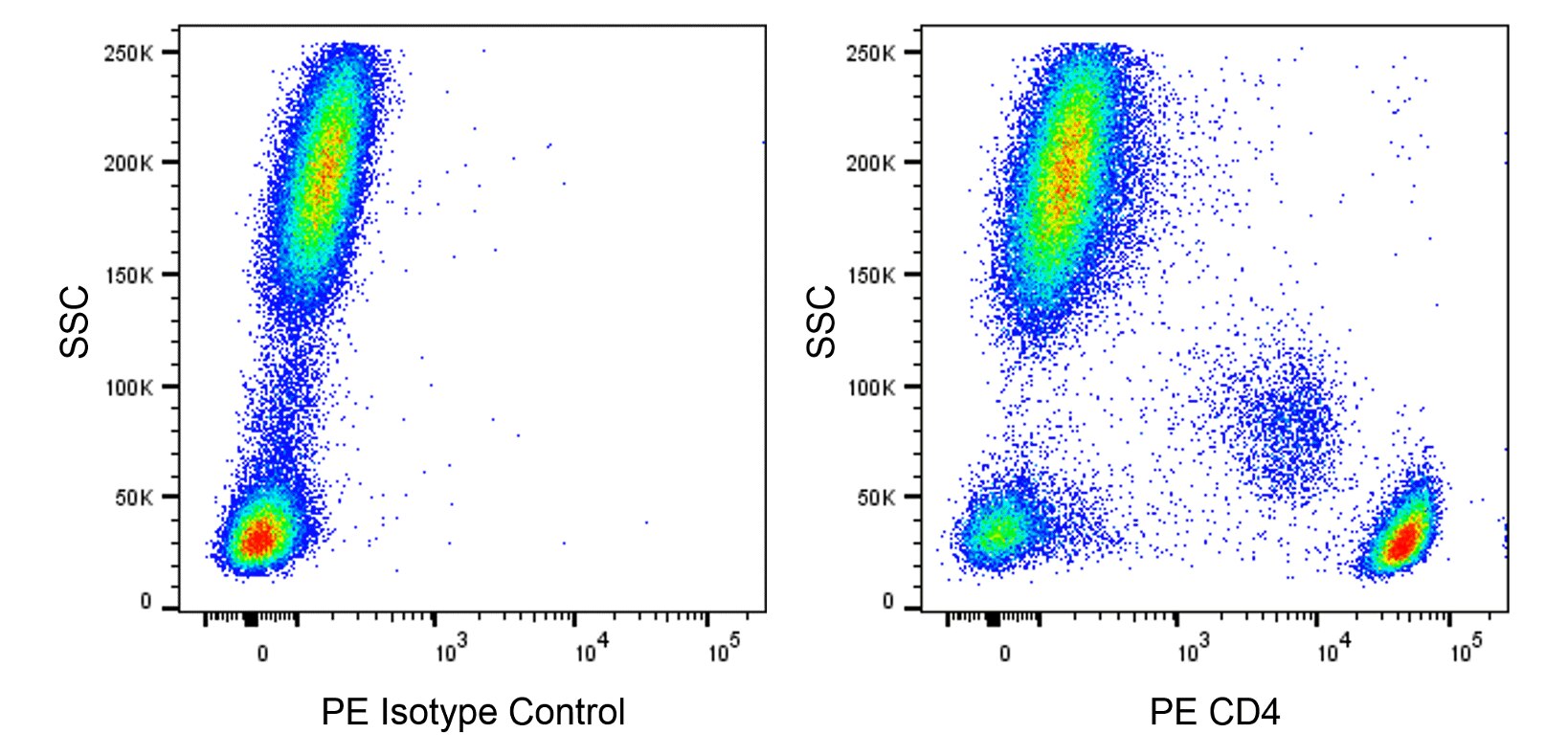-
Training
- Flow Cytometry Basic Training
-
Product-Based Training
- BD FACSDiscover™ S8 Cell Sorter Product Training
- Accuri C6 Plus Product-Based Training
- FACSAria Product Based Training
- FACSCanto Product-Based Training
- FACSLyric Product-Based Training
- FACSMelody Product-Based Training
- FACSymphony Product-Based Training
- HTS Product-Based Training
- LSRFortessa Product-Based Training
- Advanced Training
-
- BD FACSDiscover™ S8 Cell Sorter Product Training
- Accuri C6 Plus Product-Based Training
- FACSAria Product Based Training
- FACSCanto Product-Based Training
- FACSLyric Product-Based Training
- FACSMelody Product-Based Training
- FACSymphony Product-Based Training
- HTS Product-Based Training
- LSRFortessa Product-Based Training
- United States (English)
-
Change country/language
Old Browser
This page has been recently translated and is available in French now.
Looks like you're visiting us from {countryName}.
Would you like to stay on the current country site or be switched to your country?


.png)

Multiparameter flow cytometric analysis of CD4 expression on human peripheral blood leucocytes. Human whole blood was stained with either PE Mouse IgG2b, κ Isotype Control (Cat. No. 555058; Left Plot) or PE Mouse Anti-Human CD4 antibody (Cat. No. 566679/566680; Right Plot). Erythrocytes were lysed with BD Pharm Lyse™ Lysing Buffer (Cat. No. 555899). Two-parameter pseudocolor dot plots showing the correlated expression of CD4 (or Ig Isotype control staining) versus side light-scatter (SSC) signals were derived from gated events with the forward and side light-scatter characteristics of viable leucocyte populations. Flow cytometric analysis was performed using a BD LSRFortessa™ X-20 Cell Analyzer System.
.png)

BD Pharmingen™ PE Mouse Anti-Human CD4
.png)
Regulatory Status Legend
Any use of products other than the permitted use without the express written authorization of Becton, Dickinson and Company is strictly prohibited.
Preparation And Storage
Product Notices
- This reagent has been pre-diluted for use at the recommended Volume per Test. We typically use 1 × 10^6 cells in a 100-µl experimental sample (a test).
- An isotype control should be used at the same concentration as the antibody of interest.
- Source of all serum proteins is from USDA inspected abattoirs located in the United States.
- Caution: Sodium azide yields highly toxic hydrazoic acid under acidic conditions. Dilute azide compounds in running water before discarding to avoid accumulation of potentially explosive deposits in plumbing.
- For fluorochrome spectra and suitable instrument settings, please refer to our Multicolor Flow Cytometry web page at www.bdbiosciences.com/colors.
- Please refer to www.bdbiosciences.com/us/s/resources for technical protocols.
Companion Products





The OKT4 monoclonal antibody specifically recognizes CD4 which is also known as T4 and Leu-3. CD4 is expressed on most thymocytes, T-helper/inducer cells, regulatory T cells (Tregs), and NKT cells. It is also variably expressed on monocytes, macrophages, and some dendritic cells. CD4 is a ~55 kDa type I transmembrane glycoprotein that is encoded by CD4 which belongs to the immunoglobulin superfamily (IgSF). CD4 binds to a nonpolymorphic region of MHC class II and serves as a coreceptor, along with the T cell receptor for antigen (TCR), for the MHC Class II-restricted recognition of antigens on antigen-presenting cells. CD4 also functions as a receptor for human immunodeficiency viruses (HIV). CD4 has four immunoglobulin-like extracellular domains in its extracellular region and a CXCP binding motif for p56Lck in its cytoplasmic domain which regulates the antigen-bound TCR-induced signaling cascade.

Development References (9)
-
Courtney AH, Lo WL, Weiss A. TCR Signaling: Mechanisms of Initiation and Propagation. Trends Biochem Sci. 2018; 43(2):108-123. (Biology). View Reference
-
Hoffman RA, Kung PC, Hansen WP, Goldstein G.. Simple and rapid measurement of human T lymphocytes and their subclasses in peripheral blood.. Proc Natl Acad Sci U S A. 1980; 77(8):4914-4917. (Clone-specific: Flow cytometry). View Reference
-
Horibe K, Knowles RW, Naito K, Morishima Y, Dupont B. Analysis of T lymphocyte antibody specificities: Comparison of serology with immunoprecipitation patterns. In: Bernard A. A. Bernard .. et al., ed. Leucocyte typing : human leucocyte differentiation antigens detected by monoclonal antibodies. Berlin New York: Springer-Verlag; 1984:212-224.
-
Kung P, Goldstein G, Reinherz EL, Schlossman SF. Monoclonal antibodies defining distinctive human T cell surface antigens. Science. 1979; 206(4416):347-349. (Immunogen: Cytotoxicity, Flow cytometry, Radioimmunoassay). View Reference
-
Miedema F, Terpstra FG, Melief CJM. T Cell-dependent immunoglobulin synthesis in the human system. Studies with T cell-specific monoclonal antibodies. In: Reinherz EL. Ellis L. Reinherz .. et al., ed. Leukocyte typing II. New York: Springer-Verlag; 1986:213-222.
-
Moebius U. Cluster report: CD4. In: Knapp W. W. Knapp .. et al., ed. Leucocyte typing IV : white cell differentiation antigens. Oxford New York: Oxford University Press; 1989:314-330.
-
Reinherz EL, Kung PC, Goldstein G, Levey RH, Schlossman SF. Discrete stages of human intrathymic differentiation: analysis of normal thymocytes and leukemic lymphoblasts of T-cell lineage. Proc Natl Acad Sci U S A. 1980; 77(3):1588-1592. (Clone-specific: Cell separation, Cytotoxicity, Flow cytometry). View Reference
-
Reinherz EL, Kung PC, Goldstein G, Schlossman SF. Further characterization of the human inducer T cell subset defined by monoclonal antibody. J Immunol. 1979; 123(6):2894-2896. (Clone-specific: Flow cytometry, Fluorescence activated cell sorting). View Reference
-
Reinherz EL, Kung PC, Goldstein G, Schlossman SF. Separation of functional subsets of human T cells by a monoclonal antibody. Proc Natl Acad Sci U S A. 1979; 76(8):4061-4065. (Immunogen: Cell separation, Flow cytometry, Fluorescence activated cell sorting). View Reference
Please refer to Support Documents for Quality Certificates
Global - Refer to manufacturer's instructions for use and related User Manuals and Technical data sheets before using this products as described
Comparisons, where applicable, are made against older BD Technology, manual methods or are general performance claims. Comparisons are not made against non-BD technologies, unless otherwise noted.
For Research Use Only. Not for use in diagnostic or therapeutic procedures.
Report a Site Issue
This form is intended to help us improve our website experience. For other support, please visit our Contact Us page.